Mount Rainier National Park: 1st Time Visitor Guide
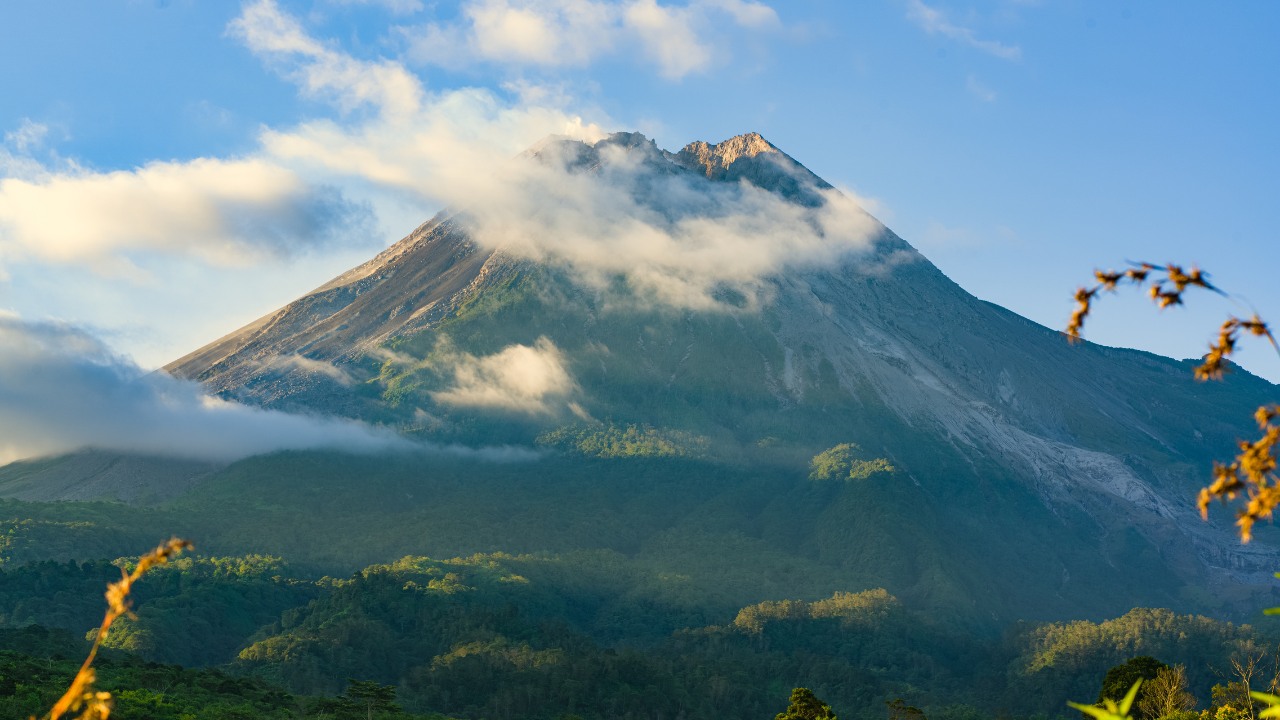
Rising over 14,000 feet, Mount Rainier is one of the most iconic peaks in the United States. A crown jewel of the Pacific Northwest, Mount Rainier National Park is a wonderland of ancient glaciers, wildflower-filled meadows, cascading waterfalls, and lush old-growth forests. Whether you’re a seasoned hiker or a road tripper seeking views from the comfort of your car, this first-time visitor guide will help you plan an unforgettable journey to one of America’s most majestic national parks.
Overview
-
Location: Washington State, about 2 hours southeast of Seattle
-
Established: 1899 (5th national park in the U.S.)
-
Size: Over 236,000 acres
-
Notable Feature: Mount Rainier, a 14,410 ft active stratovolcano
-
Elevation Range: 1,600 to over 14,000 feet
The park is divided into several popular regions:
-
Paradise: Known for its wildflowers, panoramic views, and visitor amenities
-
Sunrise: The highest point accessible by vehicle, offering spectacular views
-
Longmire: Historic district with trails and museum exhibits
-
Carbon River & Mowich Lake: Less crowded, lush forested regions
Best Times to Visit
-
Summer (July–September): Peak season with the best weather, accessible trails, and vibrant wildflowers. Expect crowds.
-
Fall (October): Crisp air and golden foliage. Some roads and facilities begin to close.
-
Spring (May–June): Lower elevation hikes become accessible, but snow still lingers in higher regions.
-
Winter (November–April): Best for snowshoeing and backcountry skiing, but limited access. Paradise remains open for snowplay.
Pro Tip: Always check current road and weather conditions on the official NPS site before your visit.
Photos:
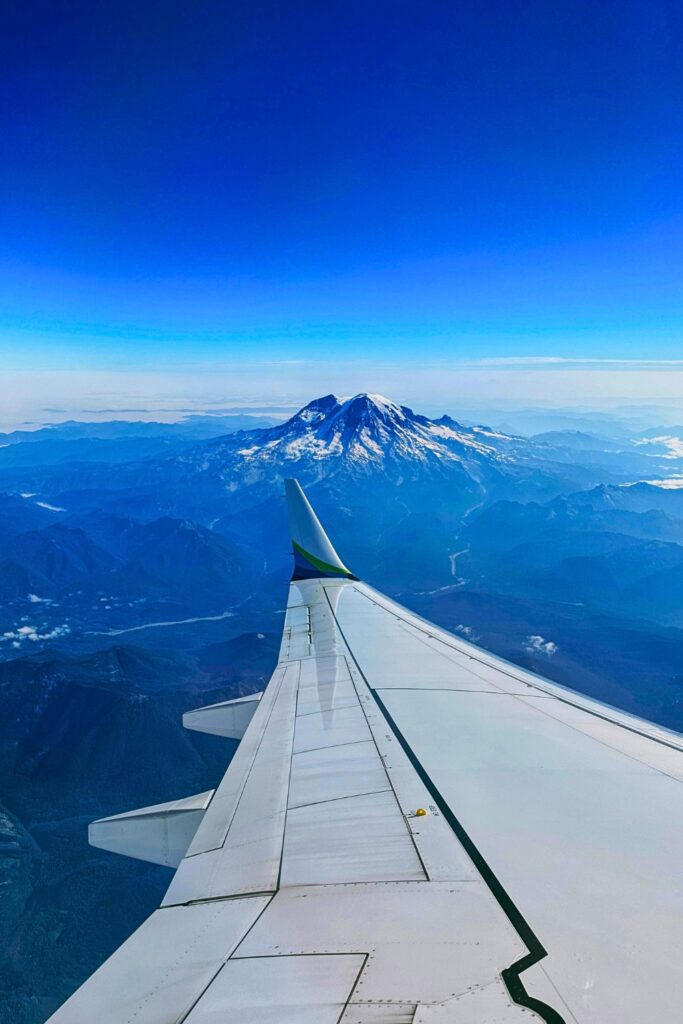
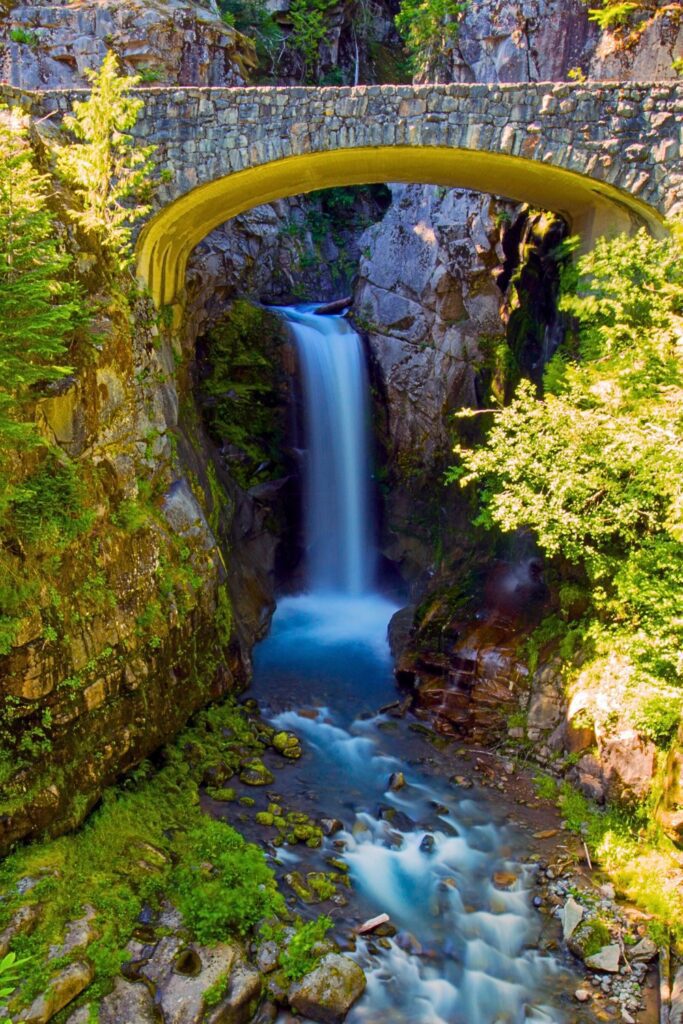

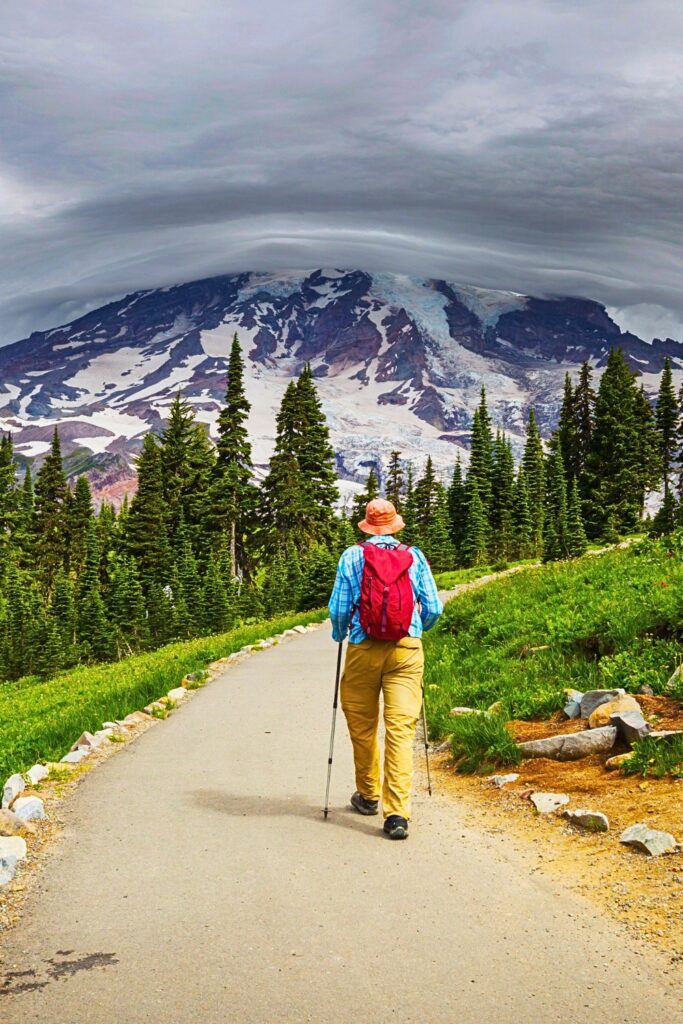
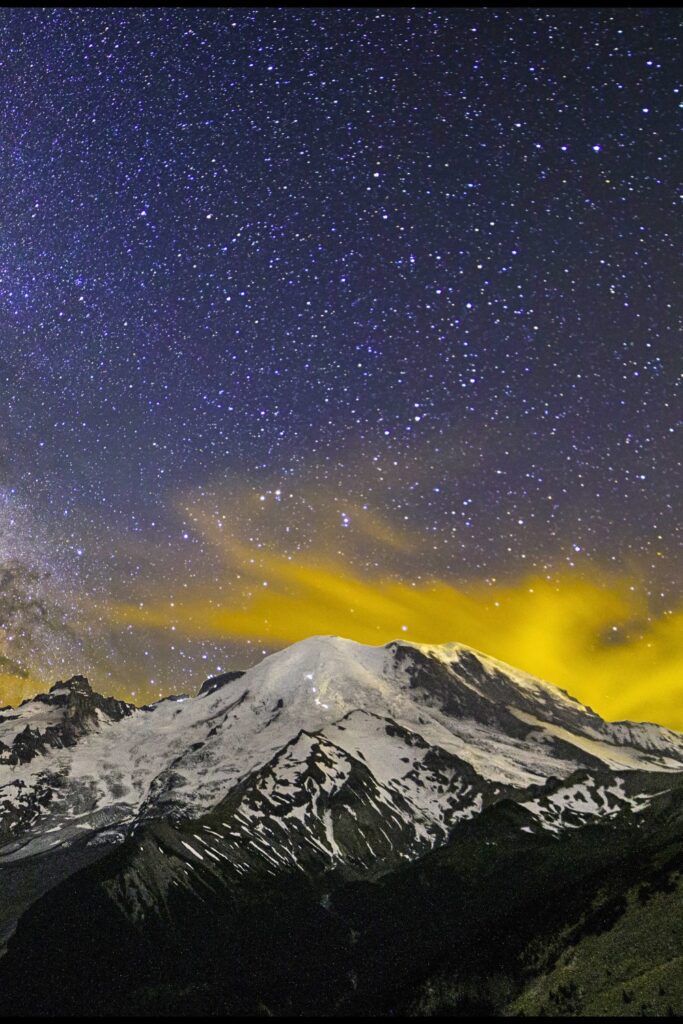
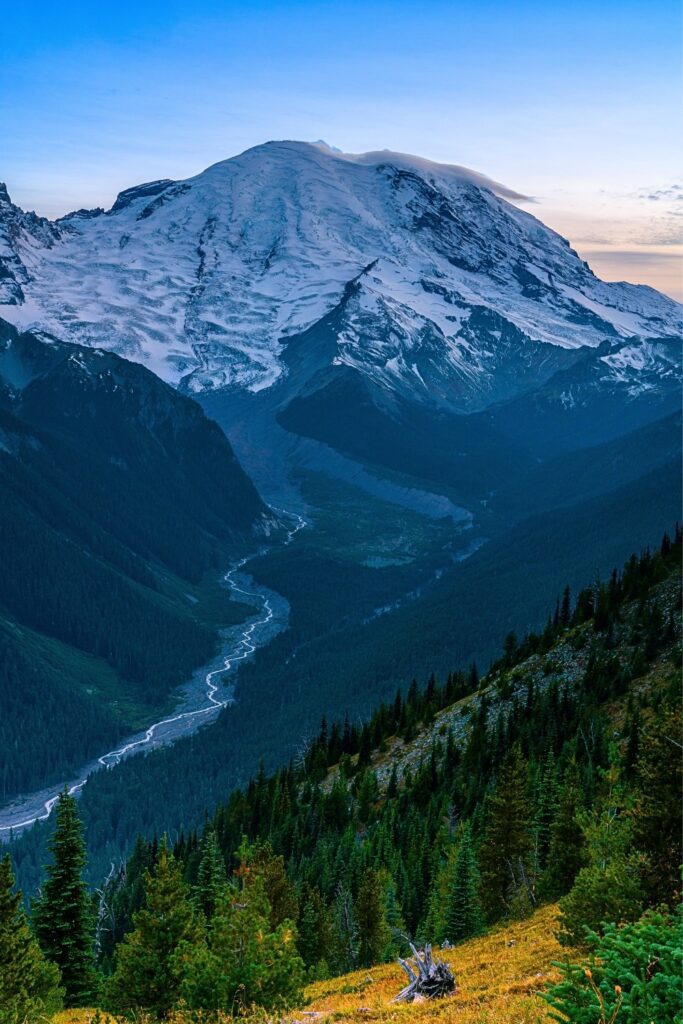
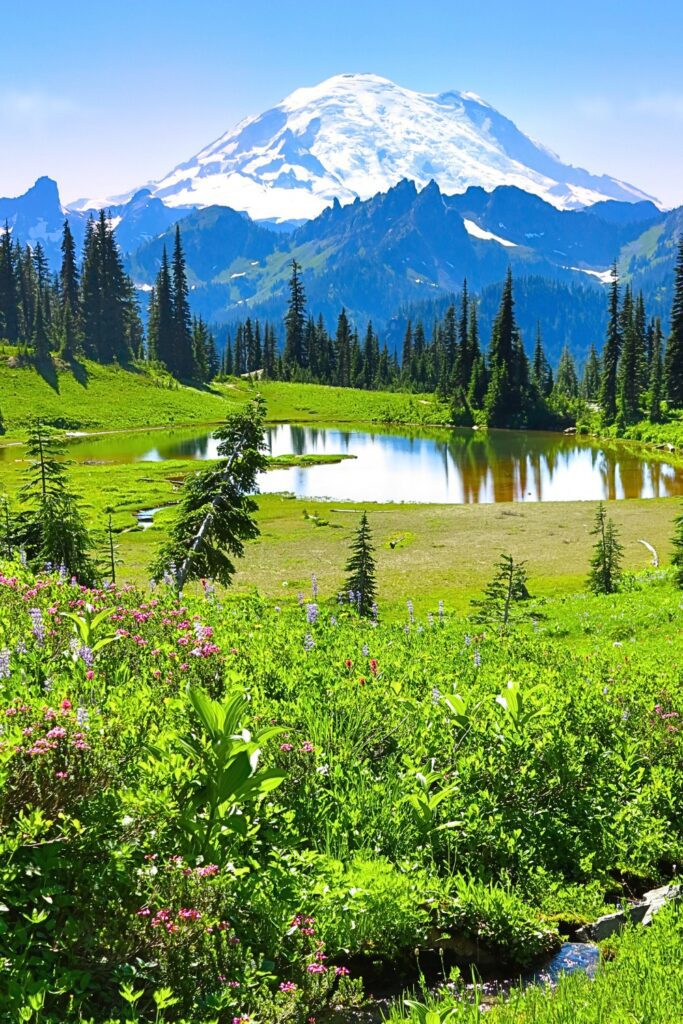
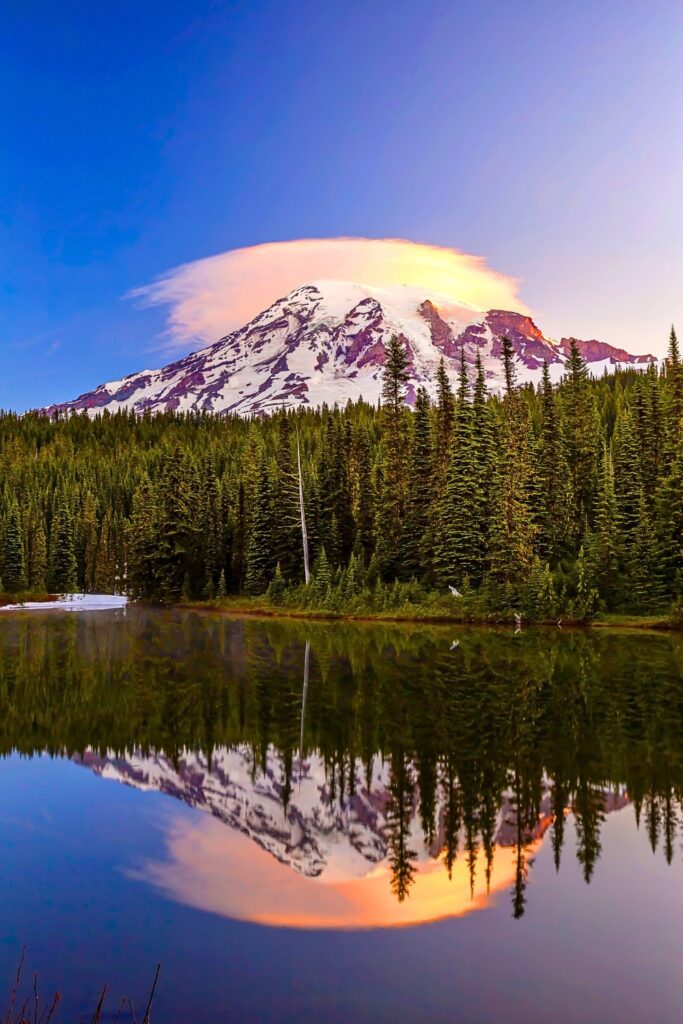
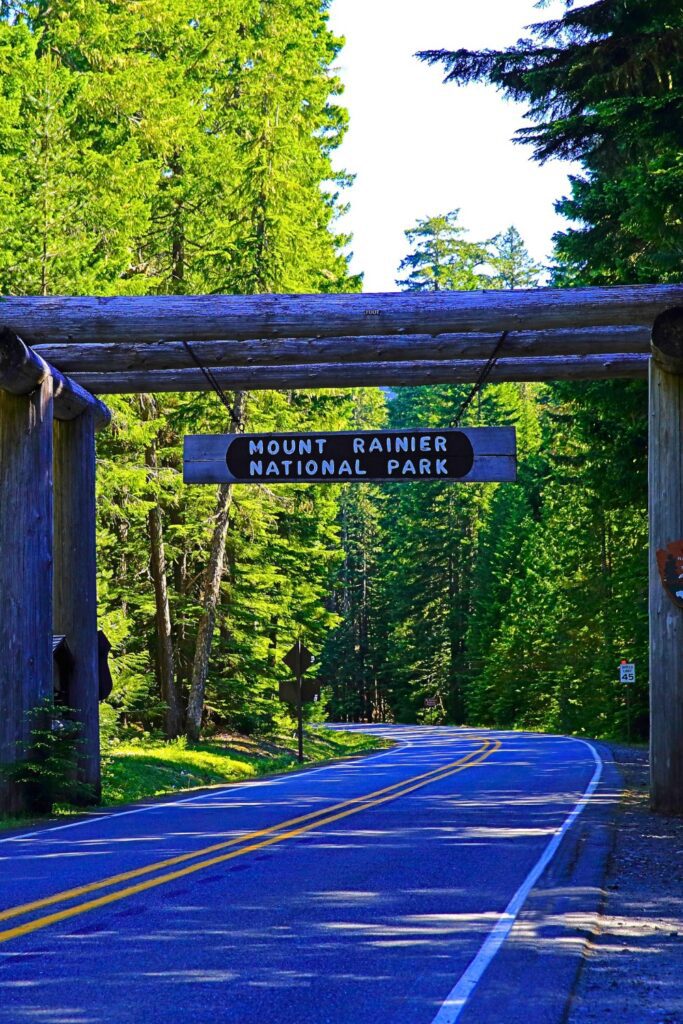
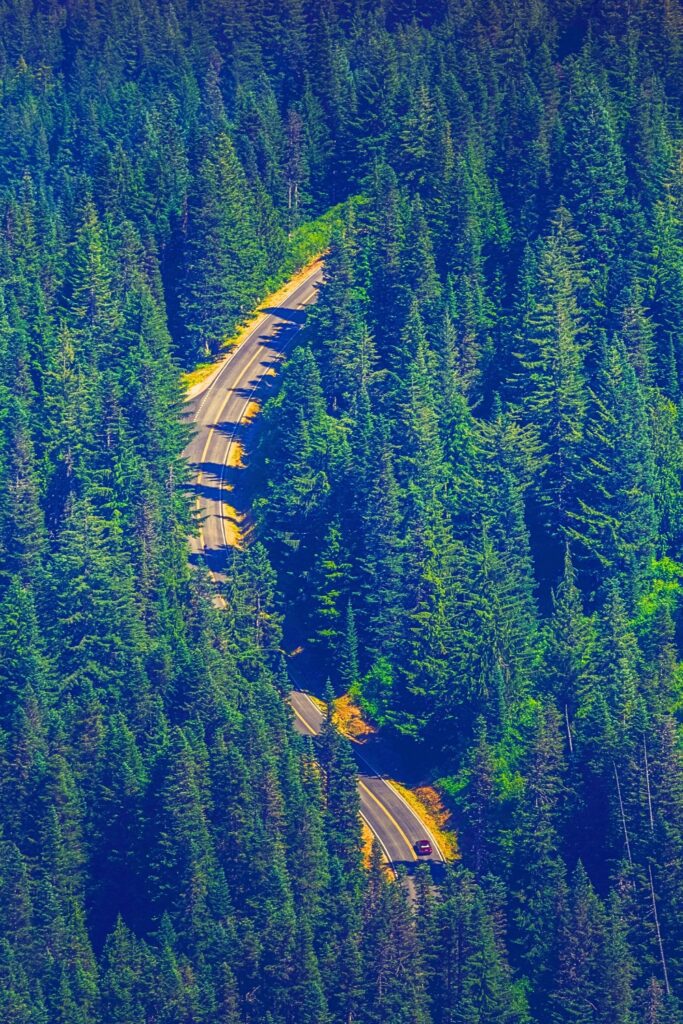
Plan Your Trip
10 Best Things to Do in Mount Rainier National Park
-
Take in the views at Paradise – The most visited area, with easy access to stunning meadows and the iconic mountain backdrop.
-
Drive the scenic Stevens Canyon Road – A jaw-dropping drive past waterfalls, lakes, and mountain vistas.
-
Visit Sunrise Point – The highest point in the park reachable by car (6,400 ft) offers unforgettable sunrise views.
-
Explore the Grove of the Patriarchs – A short trail through an ancient forest of 1,000-year-old trees.
-
Hike to Myrtle Falls – Just a short walk from Paradise, this viewpoint offers one of the best postcard shots of Rainier.
-
Tour Longmire Historic District – Learn the history of the park and explore early ranger buildings.
-
Wildflower Spotting (July–August) – Paradise and Sunrise explode with color in midsummer.
-
Snowshoe at Paradise (Winter) – Enjoy ranger-guided snowshoe hikes through the snow-covered landscape.
-
Photograph Reflection Lakes – Especially at sunrise or sunset when Mount Rainier is mirrored on the water.
-
Visit Christine Falls and Narada Falls – Two of the park’s most photogenic waterfalls.
- Bonus: See top visitor recommendations
Best Hikes (Beginner to Advanced)
Beginner Hikes:
-
Nisqually Vista Trail (1.2 miles round trip) – Easy loop near Paradise with great views of Mount Rainier.
-
Grove of the Patriarchs (1.5 miles round trip) – Gentle trail through towering ancient trees and over a suspension bridge.
Moderate Hikes:
-
Skyline Trail Loop (5.5 miles round trip) – Arguably the best hike in the park. Wildflowers, glaciers, waterfalls, and mountain views.
-
Tolmie Peak Trail (5.6 miles round trip) – Forested trail ending at a fire lookout with views over Mowich Lake and Rainier.
Advanced Hikes:
-
Burroughs Mountain Trail (9 miles round trip) – Starts at Sunrise and offers close-up views of the glaciers.
-
Camp Muir (8 miles round trip, 4,600 ft elevation gain) – A strenuous hike from Paradise that brings you to a mountaineering basecamp at over 10,000 feet.
5 Hidden Gems in Mount Rainier National Park
While Paradise and Sunrise steal the spotlight, Mount Rainier is full of lesser-known treasures worth exploring:
1. Spray Park: Located near Mowich Lake, Spray Park offers stunning alpine meadows, cascading waterfalls, and fewer crowds than Paradise. Late July to early August is peak wildflower season here.
2. Lake Eleanor: A peaceful lake nestled off Westside Road, accessible by a moderate hike. It’s quiet, serene, and a great picnic spot if you want to escape the more popular areas.
3. Carbon River Rainforest: This northwest corner of the park feels like another world. Walk or bike the old Carbon River Road and explore lush, mossy forests with towering ferns and constant misty ambiance.
4. Bench and Snow Lakes: A short but rewarding hike just off Stevens Canyon Road. These lakes reflect Mount Rainier beautifully and are often missed by visitors rushing toward Paradise.
5. Eagle Peak Saddle Trail: Start from Longmire and enjoy an underrated but spectacular hike that rewards you with panoramic views of Mount Rainier’s south face, especially in late summer.
1–5 Day Itinerary Samples
Day 1 (Quick Visit)
-
Arrive via Nisqually Entrance
-
Explore Paradise area
-
Short hikes: Myrtle Falls, Nisqually Vista Trail
-
Visit the Jackson Visitor Center
-
Sunset at Reflection Lakes
Day 2 (Classic Highlights)
-
Sunrise Visitor Center and views
-
Hike to Frozen Lake or the 1st Burroughs
-
Scenic drive via Stevens Canyon Road
-
Stop at Box Canyon and Grove of the Patriarchs
Day 3 (Hidden Gems)
-
Visit Mowich Lake area
-
Hike Spray Park Trail
-
Picnic at Lake Mowich
-
Stop at viewpoints along the drive out
Day 4 (Waterfalls & Forests)
-
Start in Longmire
-
Hike Rampart Ridge or Eagle Peak Saddle
-
Visit Christine and Narada Falls
-
Drive Westside Road and walk to Lake Eleanor
Day 5 (Adventure Day)
-
Early start for Camp Muir hike (if prepared)
-
OR hike Tolmie Peak
-
Relax at a scenic overlook
-
Exit the park via White River or Carbon River side
Packing List
- My Amazon gear list
-
National Park Pass or entry fee
-
Reusable water bottles or hydration packs
-
Layered clothing (weather changes rapidly)
-
Sturdy hiking shoes
-
Trail snacks or picnic meals
-
Sunglasses and sunscreen
-
Trekking poles (recommended for higher elevation hikes)
-
Camera or binoculars
-
Bug spray (especially in July)
-
Map or GPS (cell service is unreliable in many areas)
Optional (seasonal):
-
Snowshoes or microspikes (winter)
-
Lightweight rain gear
-
Bear spray (less common in Rainier but worth considering)
Where to Stay
Things to Know Before You Go
-
Entrance Fee: $30 per vehicle (valid for 7 days) or use an America the Beautiful Pass.
-
No Cell Service: Download maps and trail info beforehand.
-
Weather Changes Quickly: Even in summer, rain and fog can roll in unexpectedly.
-
Wildlife: Respect animals and maintain safe distances. Don’t feed wildlife.
-
Road Closures: Some park roads are seasonal, check the NPS website before your visit.
-
Limited Services: Gas and food options are limited inside the park. Fuel up before entering.
Final Thoughts
Mount Rainier National Park is a destination that leaves a lasting impression. Whether you’re gazing up at the mountain from a flower-strewn meadow or standing at the edge of a glacier-fed lake, the experience is both humbling and awe-inspiring. This first-time guide should give you all the tools you need to explore safely, discover hidden gems, and make the most of your visit to one of the most beautiful places in the Pacific Northwest!
